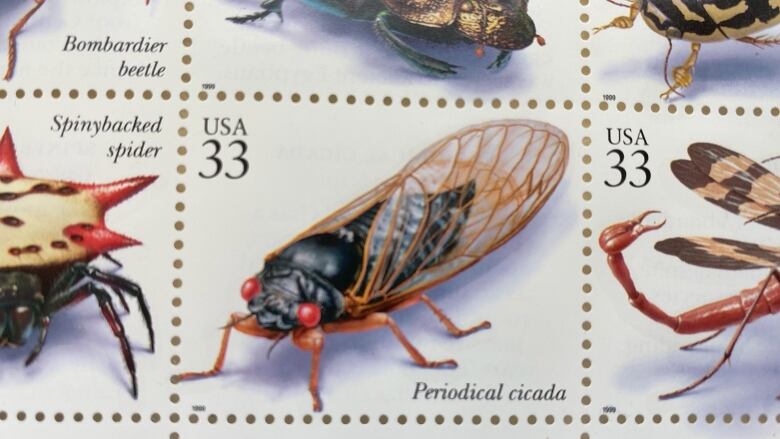Alberta has 7 species of cicada and they're among the loudest insects on the planet
Calgary naturalist Brian Keatingon how cicadas make their music

Growing up in the eastern United States, Calgary naturalist Brian Keatingtook great delight in climbing trees to find and capture cicadas, sometimes keeping them as pets.
"They were just one of those remarkable little creatures that that was just such a welcome sound in the hot summer days," Keating told The Homestretch on Monday.
The seven species of cicada found in wooded areas in Albertaaren't as famous as the trillions of 17-year cicadasthat emerged in the States earlier this year, but they're still among the loudest insects on the planet. The word cicada means "tree cricket," and these tree crickets can raise a racket.
A swarm can produce a clamour up to 120 decibels louder than a rock concert and comparable to a chainsaw.
The males are the ones that sing, explained Keating. They have a membrane structure on the underside of their belly called atymbal, and rapid contraction of internal musclescauses the tymbal to buckle inwards and "click." The relaxation of muscles produces another "click," and these sounds are amplified by a hollow abdomen.
"The clicks sounds like a continuous note to our ear. And they can modulate that sound by positioning their abdomen towards or away from the branch," said Keating. "Each species has its own distinctive mating song and acoustic signal, and that way you get the appropriate species coming to you when you're calling for them."

There are 1,300 species of cicada around the world. The largest have a wingspan of up to 20 centimetres and they're shaped, said Keating like "little bomber jets." In some parts of the world, because of their large sizeand high protein content, they're often afood source for people.
A mating call
Though the buzz of cicadas can cause hearing damage in humans, the insects themselves are left unharmed, explained Keating. They have a tympanal organ the equivalent of having ears that the males disable when calling, so they don't damage their own hearing.
"When you think of it, it's pretty handy device to have. You know, you're yelling all the time. You don't have to listen to your own voice," said Keating.
After attracting a mate, though, the males aren't so lucky. They perish, as does their female partner after she cuts little slits into bark of a tree branchand deposits about 400 eggs.
When they eggs hatch, the nymphs,or juveniles, drop to the ground and burrow down about six feet. How long they stay depends on the species; some burrow for two years, others for 13-17.
"Evolutionary biologists theorize that they do it so that they fool the predators," said Keating. "If you come out in that kind of abundance every year, there's going to be an evolution of predators to take care of that kind of abundance. But if you do it every 17 years, you keep them guessing."
When the nymphs eventually reemerge, we hear their song again thesound of summer coming from the trees.
For more fascinating stories about Alberta's wildlife from naturalist Brian Keating, visit hiswebsiteand check out these stories:
With files from The Homestretch












_(720p).jpg)


 OFFICIAL HD MUSIC VIDEO.jpg)
.jpg)



























































































